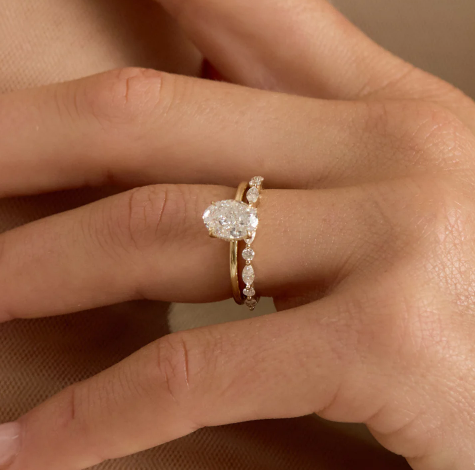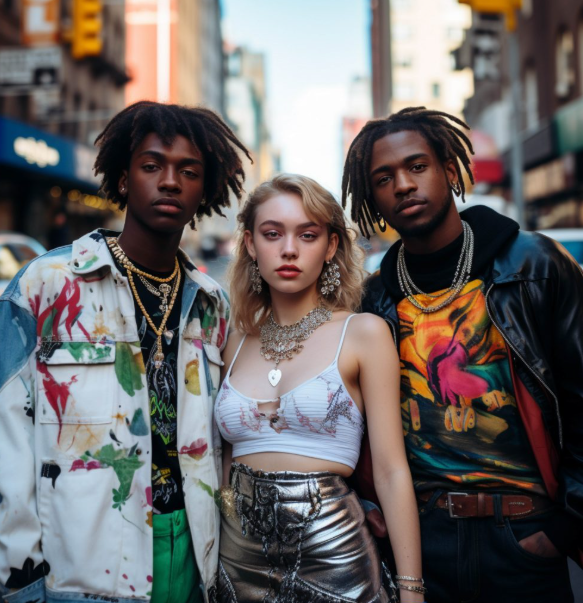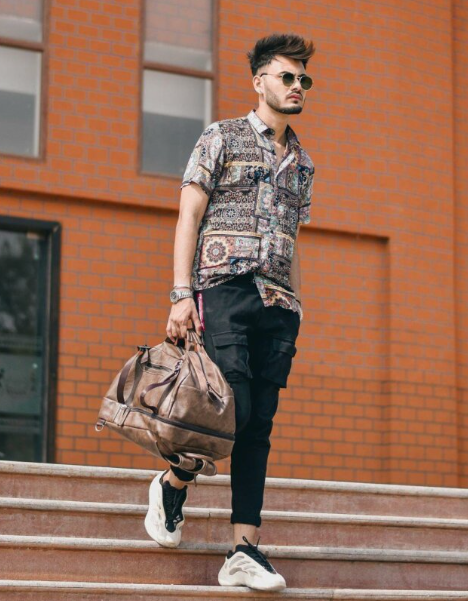Streetwear vs. High Fashion: The Clash of Two Fashion Worlds

Streetwear and high fashion have long existed on opposite ends of the fashion spectrum, representing two distinct cultural identities. One is born from the streets, rebellious and free-spirited, while the other is rooted in the world of luxury, refined and exclusive. However, in recent years, these two worlds have increasingly collided, creating a fascinating fusion of cultures and styles. But what does this cultural clash between streetwear and high fashion really mean? Let’s dive into this transformation and explore how these two forces are influencing each other today.
Origins of Streetwear and High Fashion
At their core, streetwear and high fashion come from two entirely different worlds. Streetwear emerged from youth subcultures in cities like Los Angeles, New York, and Tokyo during the late 1970s and early 1980s. It was deeply influenced by hip-hop, skate culture, and punk music. Brands like Stüssy and Supreme took the world by storm, offering bold graphics, oversized fits, and an in-your-face attitude that resonated with the youth. It was about more than just clothes; streetwear became a cultural statement, a form of expression tied to art, music, and social movements.
On the other hand, high fashion traces its origins back to the luxurious ateliers of Paris in the 19th century. It is synonymous with craftsmanship, exclusivity, and the elite. Couture brands like Chanel, Dior, and Balenciaga became icons of sophistication, with each piece meticulously crafted by skilled artisans. High fashion has always been about precision, status, and accessibility limited to the privileged few, while streetwear was born from the streets, accessible to anyone who identified with its bold message.
The Cultural Gap
The biggest divide between streetwear and high fashion lies in identity. Streetwear is inherently anti-establishment, rebellious, and made for the masses. It challenges the norms, offering a voice to the marginalized. High fashion, by contrast, is built on exclusivity, precision, and tradition, catering to the wealthy and the elite. This cultural gap has created an intriguing dynamic, with streetwear calling out high fashion’s elitism, and high fashion representing the epitome of luxury and craftsmanship.
When Worlds Collide: The Evolution of Streetwear in High Fashion
The clash between streetwear and high fashion became more pronounced in the 21st century. What was once seen as a sharp divide has started to blur, with both sides increasingly influencing each other in unexpected ways.
Iconic Collaborations
The collision between these two worlds first became evident with collaborations between high-end designers and streetwear brands. One of the most iconic moments was the 2017 collaboration between Louis Vuitton and Supreme. This marked a bold move where luxury fashion and street culture were merged in a way never seen before. The collaboration sold out almost instantly, signaling that streetwear was no longer just a subculture—it had officially become part of the mainstream fashion world.
Not only were these collaborations groundbreaking, but designers themselves started crossing the divide. Virgil Abloh, the founder of streetwear brand Off-White, became the creative director at Louis Vuitton Men’s, cementing streetwear’s place in the world of high fashion.
Streetwear Takes Over High Fashion Runways
Soon, streetwear wasn’t just appearing in collaborations—it was taking over high-fashion runways. Hoodies, sneakers, and oversized jackets, once reserved for street culture, started strutting down the catwalks at Paris Fashion Week. Balenciaga’s chunky sneakers are a prime example of how streetwear was influencing luxury fashion. While some traditionalists criticized this fusion for “cheapening” high fashion, others argued that streetwear revitalized it, injecting new energy, youth, and excitement into an otherwise exclusive world.
The Changing Consumer Landscape
A significant factor in this fusion of streetwear and high fashion is the shift in consumer attitudes. Millennials and Gen Z, now key players in the fashion world, don’t view fashion in the same way as previous generations. For them, exclusivity is no longer about high price tags—it’s about authenticity, personal expression, and cultural relevance. Today’s consumers want clothing that reflects their values, stories, and individuality, rather than simply showcasing wealth.
This change in perspective has forced high-fashion brands to rethink their strategies, making their designs more inclusive and accessible. Social media plays a pivotal role in this transformation, where what was once considered exclusive can now be accessed with a simple click. The digital age has made fashion more immediate and inclusive than ever before.
Can Streetwear and High Fashion Coexist?
The big question is: Can streetwear and high fashion coexist, or will one eventually overshadow the other? There are several challenges to this blending of cultures. One concern for high fashion is maintaining its authenticity in the face of streetwear’s rise. Many luxury brands that embrace streetwear elements are criticized for appropriating street culture without respecting its origins. On the flip side, some streetwear brands risk losing the authenticity and edge that made them popular when collaborating with high-end labels.
The influence of streetwear on high fashion is undeniable, but its impact on the purity of street culture is still a matter of debate. Will collaborations and crossovers continue, or will the two worlds eventually drift apart?
The Role of Social Media
Social media, particularly platforms like Instagram and TikTok, has been a game-changer in blending streetwear and high fashion. Both platforms thrive on immediacy and accessibility, allowing what was once considered exclusive to reach a much wider audience. Viral moments from streetwear drops and high-fashion campaigns often go global within seconds, bringing these once-separate worlds together in a way that never existed before.
As the lines between high and street fashion continue to blur, social media only accelerates this fusion, pushing both styles to differentiate further while simultaneously blending them in ways that cater to the demands of modern consumers.
Conclusion
The collision between streetwear and high fashion is a fascinating cultural shift that continues to evolve. What once seemed like a divide between street culture and luxury fashion has now transformed into an exciting fusion that redefines modern fashion. Both worlds influence and challenge each other, with streetwear offering energy, youth, and rebellion, while high fashion brings tradition, craftsmanship, and exclusivity. As consumers demand more authenticity and self-expression, the boundaries between the two will continue to blur, shaping the future of fashion in a way we’ve never seen before.





